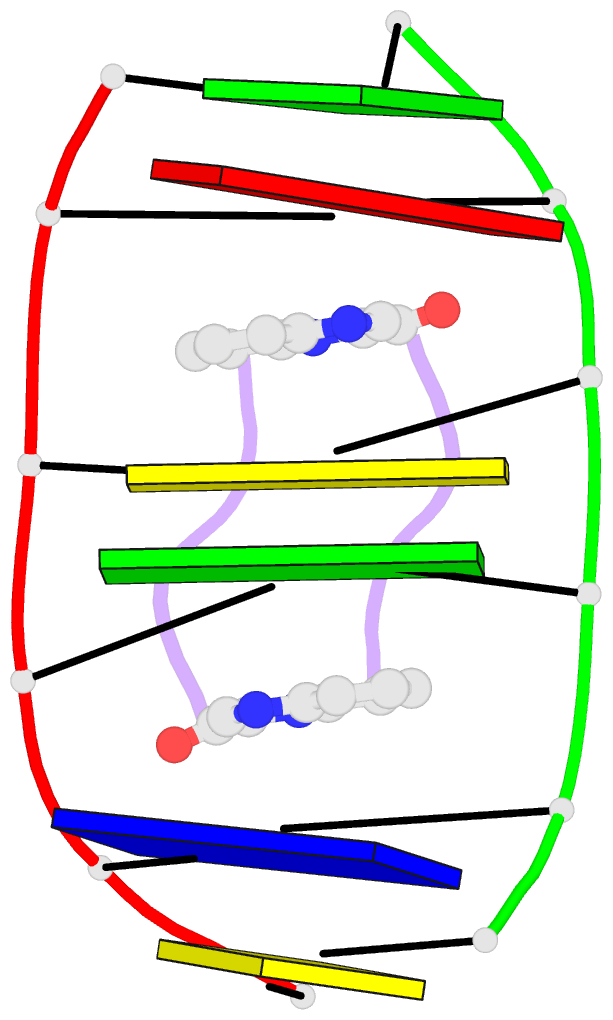Summary information and primary citation
- PDB-id
- 185d; SNAP-derived features in text and JSON formats;
DNAproDB
- Class
- DNA-antibiotic
- Method
- NMR
- Summary
- Sequence specificity of quinoxaline antibiotics. 1. solution structure of a 1:1 complex between triostin a and [d(gacgtc)]2 and comparison with the solution structure of the [n-mecys3, n-mecys7]tandem-[d(gatatc)]2 complex
- Reference
- Addess KJ, Feigon J (1994): "Sequence Specificity of Quinoxaline Antibiotics. 1. Solution Structure of a 1:1 Complex between Triostin a and [D(Gacgtc)]2 and Comparison with the Solution Structure of the [N-Mecys3,N-Mecys7]Tandem-[D(Gatatc)]2 Complex." Biochemistry, 33, 12386. doi: 10.1021/BI00207A005.
- Abstract
- Triostin A, a naturally occurring quinoxaline antibiotic that contains N-methyl groups on the valine and cysteine residues, binds sequence specifically to DNA at NCGN sites. [N-MeCys3,N-MeCys7]-TANDEM (CysMeTANDEM), a synthetic quinoxaline antibiotic, differs in its chemical structure from triostin A only at the valine residues, which contain no N-methyl substituents. CysMeTANDEM has a sequence specificity different from triostin A, binding specifically to DNA at NTAN sites. To understand the factors that determine the sequence specificity of these quinoxaline antibiotics, the solution structure of a 1:1 complex of triostin A with the DNA hexamer [d(GACGTC)]2 has been determined using NMR-derived distance and dihedral angle restraints. The solution structure of the triostin A-[d(GACGTC)]2 complex is compared directly to the solution structure of a 1:1 complex of CysMeTANDEM with [d(GATATC)]2 and is also compared to the crystal structure of 2:1 complex of triostin A with [d(CGTACG)]2. Triostin A binds to [d(GACGTC)]2 as a bis-intercalator around the CpG step, and the peptide ring of the drug binds in the minor groove of the DNA. The central C.G base pairs of the complex are underwound with an average helical twist angle of approximately -9.0 degrees and buckle inward by about 25 degrees. There are intermolecular hydrogen bonds between each of the Ala NH and the GN3 protons of the CpG binding site. Similar structural features are observed in the solution structure of the CysMeTANDEM-[d(GATATC)]2 complex. However, in the structure of the triostin A-[d(GACGTC)]2 complex, two intermolecular hydrogen bonds between each of the Ala CO oxygens of the drug and the 2-amino protons of guanine are observed. These hydrogen bonds do not form in the CysMeTANDEM-DNA complex. Instead, CysMeTANDEM contains two intramolecular hydrogen bonds between the Ala CO atoms and the Val amide protons, making the Ala CO atoms unavailable to form two intermolecular hydrogen bonds. The role of these intermolecular hydrogen bonds in the CpG specificity of triostin A is discussed.





